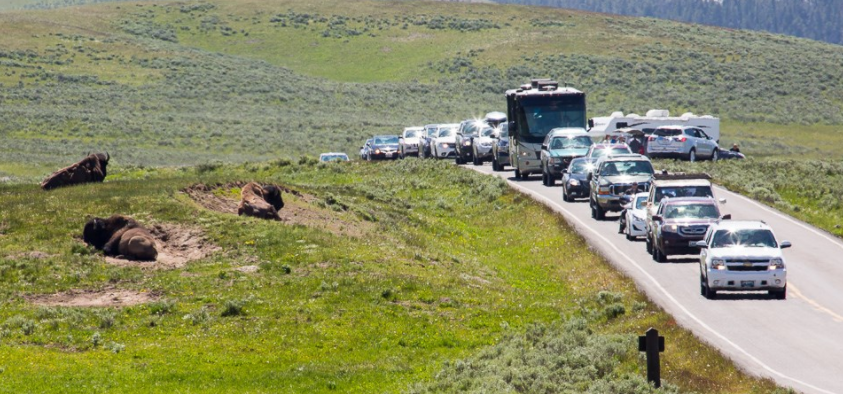Yellowstone Park explores visitor shuttle initiatives

MAMMOTH HOT SPRINGS, Wyo. (KIFI/KIDK)-Yellowstone National Park has launched two exploratory visitor shuttle initiatives aimed at easing congestion and improving visitor services.
“Yellowstone and the NPS are proactively engaging with emerging transportation technologies by looking for ways to test, pilot and learn from these capabilities,” said Superintendent Cam Sholly. “We will continue exploring possible ways to reduce congestion and to improve visitor experience and access in heavily travelled areas of the park.”
The first is an automated shuttle. Canyon Village was selected to test a low-speed, automated shuttle that could serve the campground, visitor services, and the adjoining visitor lodging area. Canyon Village was selected based on visitor safety and
A group of agencies, including National Park Service planners, and the U.S. Department of Transportation is looking into automated vehicle technology. A vendor, Beep Inc. Shuttles, will run from late May through August of 2021. Shuttle stops, route locations and distances will be determined later.
In a second, separate study, Yellowstone is partnering with the National Park Service Intermountain Regional Alternative Transportation Program, the National Park Service Denver Center, and the Department of Transportation Volpe Center to analyze the opportunities, risks and costs of local shuttles.
The shuttles could originate at Old Faithful and Canyon Village. The project’s partners will analyze potential system locations, routes, stops, fleet requirements, business models, ridership, and costs. The study will look at a variety of impacts on visitor experience, safety, park operations, resources, and stakeholders. The study is expected to conclude in 2022 and will help the park decide if piloting a local transit service in Yellowstone is feasible.
Transportation studies in 2016 and 2018 determined that the biggest impacts from peak season (July) park visitors occur in roadways and attraction sites between West Entrance to Madison Junction, to Old Faithful, to West Thumb, Madison and Norris Junction, and on to Canyon Village. Those roads and parking areas are over-capacity by about 29% during peak season conditions.
The park has tested a variety of visitor use management strategies in these corridors, such as deploying additional staff to congested areas and improving visitor access and flow at popular sites. For example, a 2019 pilot project at Norris Junction tested the efficacy of overflow parking on the Grand Loop Road combined with active management by NPS staff to improve visitor safety and access to the Norris Geyser Basin. The project demonstrated that staffing in congested areas can help facilitate safe access where parking is limited. The transit feasibility study and other future pilots are intended to respond to increased congestion and visitor experience issues where traffic congestion and parking demand exceed capacity.
The shuttle initiatives will focus on potential impacts in the four key areas including impacts on resource conditions, impacts on staffing, operations, and infrastructure, impacts on the visitor experience, and impacts on gateway communities and partners.
You can learn more about the park’s visitor use management program here.
